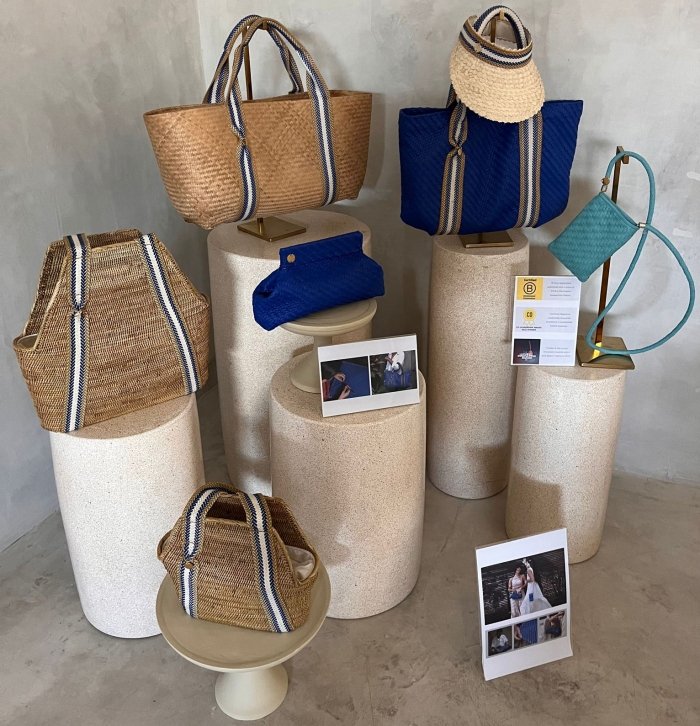Some very interesting news hit the Luxury Hospitality and Fashion space in early August 2023, and news that is very close to my heart. The Pellicano Group sold a stake to Aermont Capital. A part of the deal is Aermont committing to 200 Million EURO to acquire new properties across Italy for the Pellicano group, thus expanding the Brand and its influence.
Let’s give some context: Pellicano Hotels - https://www.pellicanohotels.com/en/ - is a family-run Italian hotel group led by the internationally stylish, very well-connected taste-maker Marie Louise Scio, who is both the CEO and Creative Director. The properties include the original “IL Pellicano”, where Scio lived as a child, “La Pasta Vecchia”, the former Roman Hideaway of John Paul Getty and the recently acquired “Mezzotorre” on the magical island of Ischia. These are hotels with so much more. Due to Scio’s extraordinary vision and taste, she has really captured a magical dream, which she is committed to sharing and expanding further.
Why is this close to my heart? “Il Pellicano” is one of my favourite places on earth. We first visited in 2000 during our Honeymoon in Italy. We have visited several times since then; the stay always feels like it is not long enough and far too infrequent. We have stayed at “La Posta Vecchia” several times and had our first trip to “Mezzotorre” in 2022. Why do we love these properties and this Brand so much? These are clearly luxury hotels, yet they are so much more. Many luxury hotel brands can be exclusive, rather imposing and formal; Pellicano is cool, vibrant, stylish and fun, with a lot of timeless class. You feel like you are part of a very cool movie or group of friends—a warm sense of belonging and familiarity, driven through amazing service and attention to detail.
Why this deal is so interesting is that it is more than opening several new hotels. The Pellicano Group “has brought a unique point of view to top-end hospitality, melding old-school charm with modern fashionability, and turned a business that began with a single hotel owned by her father into a global lifestyle brand with multiple revenue streams.” - Business of Fashion. One of those revenue streams is “Issimo”, a Fashion and lifestyle brand established during the pandemic, presumably to bring a taste of Italian (and Il Pellicano) magic to guests who could not travel there. I certainly shopped from the site and still pore over every launch and email. I had a bottle of “Il Pellicano” bagnoschiuma (shower gel), which I sniffed many times during the pandemic to remind me of those magical times that seemed so far away. As Scio loves to say, “Italians do it better”; in this case, they certainly do.
As always in this blog, I seek the psychology or feeling behind this event or direction. I see not only the trend of return or revenge travel but also a sense of escapism, similar to the subject of my previous blog on Zimmermann becoming a Billion-dollar dreamy resort dressing brand. Are these closely timed deals an indication of our desire to escape to some magical world where there are no wars, climate change or other impending doom? Indeed, a stay at any of the Pellicano Properties (wearing Zimmermann) will have you feel like a Principessa (or Princess). While this sense of escapism is relevant, there are so many other possibilities for the future.
Il Pellicano always had a cache, founded by an American Heiress and her War Hero Husband on the Argentario coast, it was the place for many celebrities, including Charlie Chaplin in his later years and, of course, Robert Scio, Marie Louise’s father. These heady years were documented by both John Swope and Slim Aarons.
Since then, Scio has relentlessly created the relevance and desirability of the Brand. She developed fashion collaborations with “For Restless Sleepers”, Birkenstock, APC, Aquazzurra and Matches Fashion, creating unique and very cool items; items that will be treasured when you go home, rather than the vacation shopping regrets we have all had - seemed like a good idea at the time, but I can’t wear it! Scio has also published an amazing book on Il Pellicano with photos by Juergen Teller.
Image from the Pellicano Group Website
The uncompromising vision and commitment is something that really resonates with me. The pursuit of magic, beauty and belonging, executed impeccably, is inspiring. Luxury has become an overused word, often with the feeling you are not quite there until you buy another bag or something else, when Luxury could simply be natural beauty, a sense of belonging and love for quality, all executed with impeccable service for the customer or Client.
Thank you, Marie Louise Scio, for sharing your magic and vision.
Kind regards,
Kate
Kate Padget-Koh

















